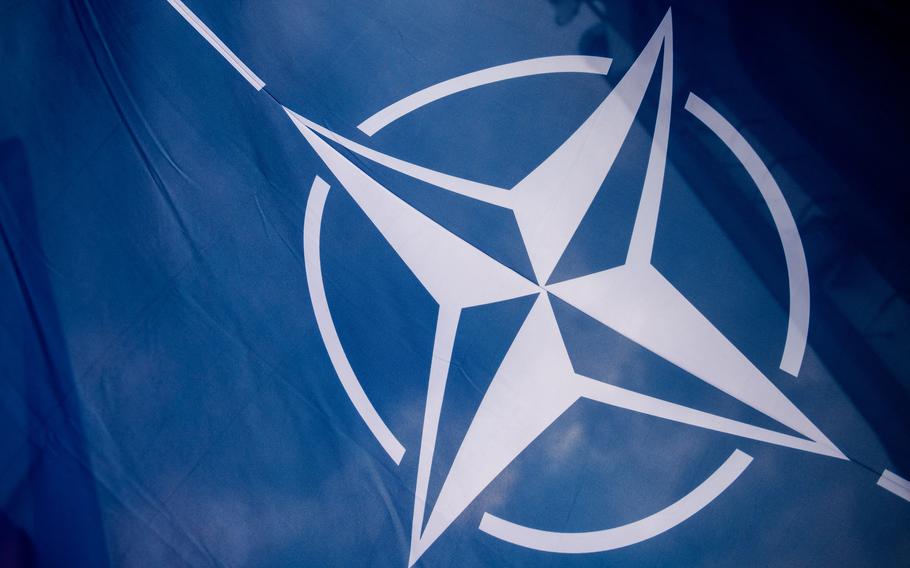
A NATO flag is set up prior to the signing ceremony of the law, ratifying the NATO Protocol on Finland and Sweden's membership, on board the Polish Navy frigate ORP Kosciuszko in Gdynia in July 22, 2022. (Mateusz Slodkowski/AFP/Getty Images/TNS)
(Tribune News Service) — NATO’s intelligence chief said that Russia is mapping critical undersea systems and warned of a significant risk that Moscow could target infrastructure in Europe and North America.
“There are heightened concerns that Russia may target undersea cables and other critical infrastructure in an effort to disrupt Western life and gain leverage against those nations that are providing support to Ukraine,” David Cattler, the military alliance’s Assistant Secretary General for intelligence and security, told reporters.
Members of the North Atlantic Treaty Organization have been racing to better safeguard undersea critical infrastructure after Nord Stream pipeline blasts last fall highlighted the difficulty of monitoring facilities and identifying attackers.
At issue is protecting systems like undersea cables, which account for 95% of internet communications and together carry an estimated $10 trillion worth of financial transactions every day, according to NATO.
“Russia is actively mapping allied critical infrastructure both on land and on the seabed, this effort is supported by Russia’s military and civilian intelligence services,” Cattler said. He warned of “a persistent and significant risk” that Russia could attack allied systems.
Russia has blamed “Anglo-Saxon” allies for blowing up the Nord Stream gas pipelines, denying Western accusations that it targeted its own links. But further incidents in recent months of what appear to be Russian spy ships operating near allied systems have heightened concern.
Admiral Henrique Gouveia e Melo, the head of the Portuguese Navy, told state-owned broadcaster RTP in March that a Russian vessel near the Portuguese island region of Madeira was a spy ship that was following and measuring submarine cables.
A joint investigation published in April by Danish, Finnish, Swedish and Norwegian public broadcasters said that Russian military and civilian ships were mapping seabed infrastructure in the Baltic and North Seas.
Russia’s “patrols into the Atlantic and throughout the Atlantic are at a high level, most of the time at a higher level than what we’ve seen in recent years,” Cattler said. He added Russia appears to be targeting undersea infrastructure in the broad Atlantic, the Baltic Sea and the North Sea.
Cattler pointed to Russia’s military strategy — which calls for rapid destruction of critical infrastructure in the early stages of a conflict, a tactic seen in Ukraine — as one reason for the heightened concern.
Moscow’s efforts are led in part by an underwater reconnaissance program in the ministry of defense and are supported by military and civilian intelligence services, with considerable resources at their disposal across the digital, space, air, land and maritime domains, he said.
While China is also active in the domain, Cattler said, it is more interested in buying infrastructure than testing the vulnerabilities of others. He added that threats also exist from terrorists and other groups, particularly where the cables or infrastructure meet land.
NATO recently established an undersea infrastructure coordination cell, led by Lieutenant General Hans-Werner Wiermann, which aims to boost the security of allied systems by sharing best practices, information and wielding technologies to secure the links.
With monitoring undersea infrastructure a particularly difficult challenge, Wiermann said NATO wants to add another layer of surveillance to its systems to identify suspicious behavior close to or above critical undersea cables, pipelines and connectors by analyzing signal data that could point to tampering.
With assistance from Joao Lima, Torrey Clark and Gregory L. White.
©2023 Bloomberg L.P.
Visit bloomberg.com.
Distributed by Tribune Content Agency, LLC.